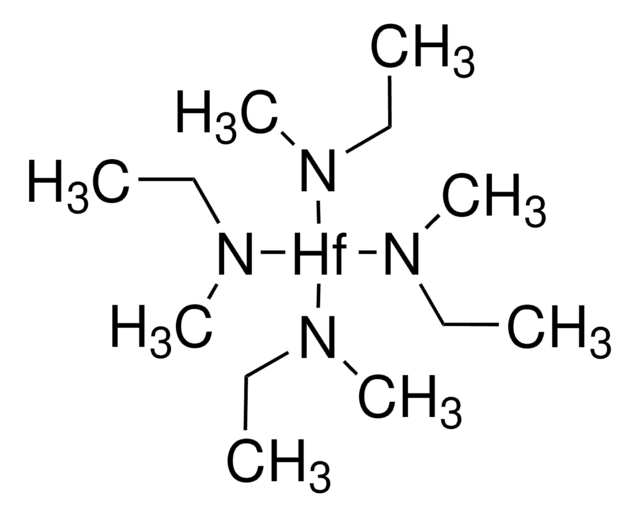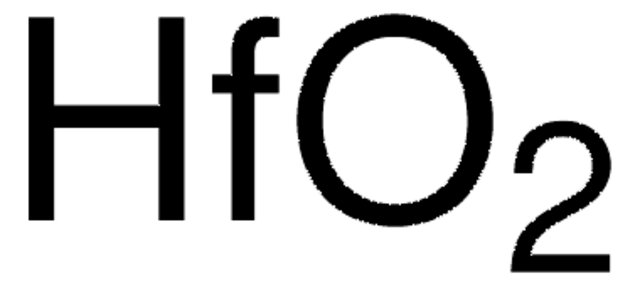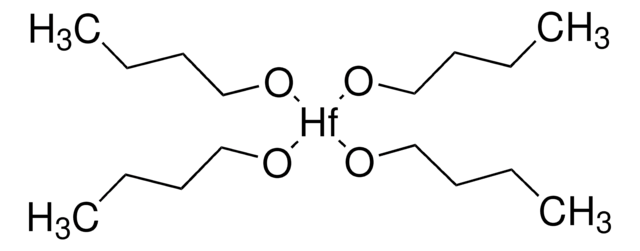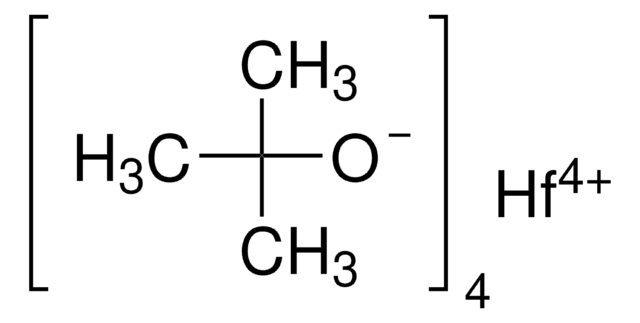590592
Hafnium(IV) chloride
purified by sublimation, 99.9% trace metals basis
Synonym(s):
Hafnium tetrachloride, Tetrachlorohafnium
About This Item
Recommended Products
vapor pressure
1 mmHg ( 190 °C)
Quality Level
assay
99.9% trace metals basis
form
powder
purified by
sublimation
impurities
≤1500.0 ppm Trace Metal Analysis
SMILES string
Cl[Hf](Cl)(Cl)Cl
InChI
1S/4ClH.Hf/h4*1H;/q;;;;+4/p-4
InChI key
PDPJQWYGJJBYLF-UHFFFAOYSA-J
Looking for similar products? Visit Product Comparison Guide
Application
- To synthesize α-aminophosphonates via the one-pot three-component reaction of aldehyde, amine, and phosphite.
- For the conversion of carbohydrates into 5-hydroxymethylfurfural in ionic liquids.
- For parallel synthesis of 1,2-disubstituted benzimidazoles from N-substituted phenylenediamines and aldehydes.
- A precursor to prepare hafnium oxide nanoparticles via sol-gel method.
- A starting material to synthesize bulky guanidinato hafnium(iv) chloridecomplexes.
accessory
signalword
Danger
hcodes
Hazard Classifications
Eye Dam. 1 - Met. Corr. 1 - Skin Corr. 1B
supp_hazards
Storage Class
8B - Non-combustible corrosive hazardous materials
wgk_germany
WGK 3
flash_point_f
Not applicable
flash_point_c
Not applicable
Choose from one of the most recent versions:
Already Own This Product?
Find documentation for the products that you have recently purchased in the Document Library.
Customers Also Viewed
Related Content
We offer a complete line of the highest purity inorganic salts and materials for the micro and nanoelectronics market.
Our team of scientists has experience in all areas of research including Life Science, Material Science, Chemical Synthesis, Chromatography, Analytical and many others.
Contact Technical Service







